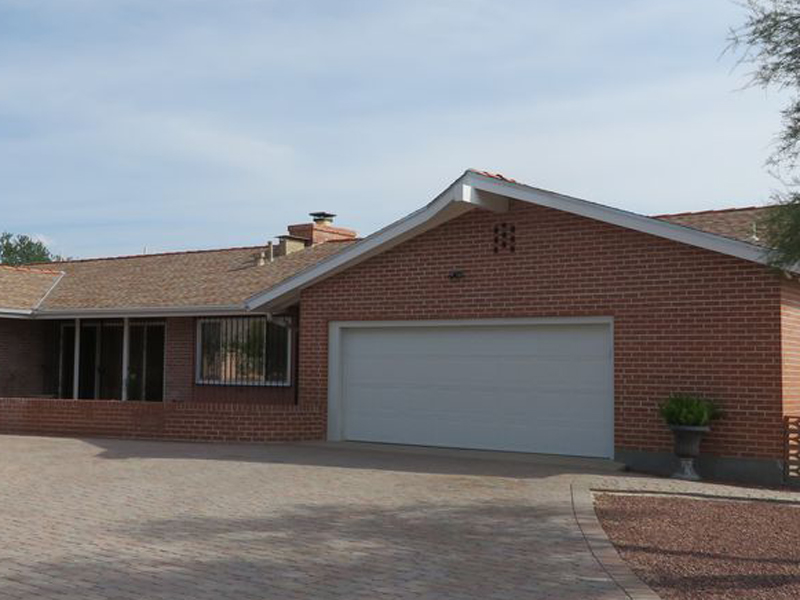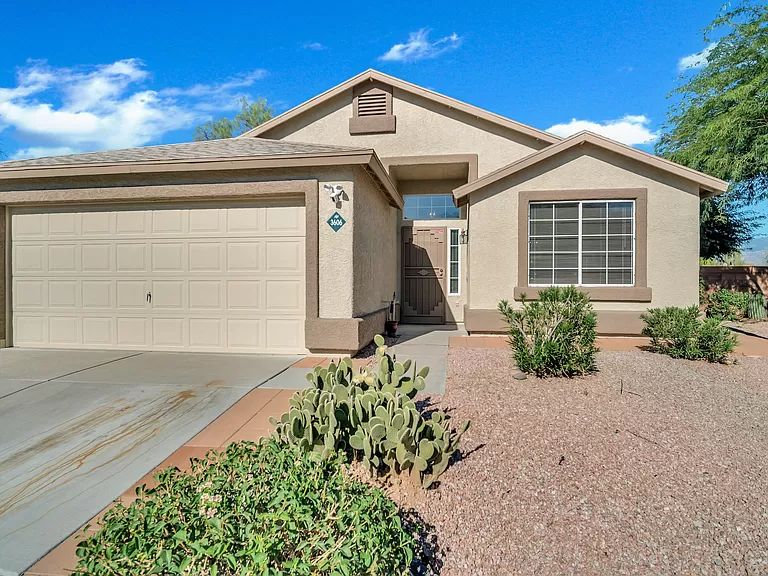Is Your Garage Door Stuck? Here's What to Do Very first
When your garage door will not open up, start with these important safety checks before trying any kind of repairs. Initially, ensure no one is standing near the door which automobiles are free from the opening. Seek apparent indicators of damages like broken panels, bent tracks, or hanging cable televisions. If you see a snapped spring or badly damaged parts, quit right away and call an expert—-- these repair services need specific devices and experience to take care of safely.

Examine These 6 Things Before Calling a Specialist
Prior to thinking you require expensive repairs, run through this fast analysis checklist that resolves most garage door troubles:
-
Source of power: Validate the opener is connected in and the electrical outlet is functioning
-
Remote batteries: Change dead batteries in your push-button control
-
Hand-operated lock: Check if a person inadvertently engaged the hands-on lock
-
Obstructions: Search for particles obstructing the door's path or sensors
-
Emergency release: Guarantee the red emergency situation cord hasn't been pulled
-
Circuit breaker: Verify the garage circuit hasn't stumbled
These simple checks resolve roughly 70% of garage door concerns without needing specialist treatment.
10 Typical Reasons Your Garage Door Will Not Open
Understanding why your garage door opener isn't functioning aids you select the best service. Here are the most regular causes property owners experience:
Dead remote batteries stand for the easiest fix—-- when batteries die, the remote can't send out signals to the opener. Power outages or stumbled breakers cut electrical energy to the motor. Damaged springtimes avoid the door from raising effectively and require instant specialist focus. Sensing unit imbalance causes safety and security systems to obstruct door operation. Track obstructions stop rollers from moving efficiently. Motor overload triggers automated shutoffs when the opener detects resistance. Limitation switch troubles perplex the opener concerning door placement. Wire damage interferes with the training system. Weather-related issues influence door movement throughout extreme temperatures. Element wear from age slowly minimizes system performance.
Trouble # 1: Dead Remote Control Batteries
When your wall switch works yet your remote doesn't, dead batteries are generally the culprit. A lot of garage door remotes use either 3-volt lithium or 12-volt alkaline batteries. Eliminate the back cover of your remote and examine the battery type. Change with fresh batteries and evaluate the remote. If it still does not function, you may need to reprogram it to your opener. Consult your opener's guidebook for certain reprogramming instructions, as the procedure differs by manufacturer.
Issue # 2: Power Supply Issues
Garage door power problems usually stem from loose links or tripped circuits. Check that the opener is securely plugged into its outlet—-- resonance can loosen connections with time. Examine the electrical outlet with another gadget to confirm it's working. Analyze your home's breaker box for tripped circuits, particularly if you've experienced storms or power fluctuations. GFCI outlets may have stumbled and require resetting. If the opener has power but will not respond, the concern most likely lies elsewhere in the system.
Problem # 3: Broken or Damaged Springs
Damaged garage door springtimes are amongst the most hazardous elements to handle. If you hear a loud bang from your garage or observe the door feels exceptionally heavy when trying to lift manually, a springtime has likely broken. Torsion springtimes run horizontally above the door, while extension springs remain on either side. Never ever try springtime repair work yourself—-- these components save tremendous stress that can cause significant injury or death. Expert substitute typically costs $150-$300 yet ensures your safety.
Trouble # 4: Obstructed Security Sensing Units
Modern garage doors include safety sensing units that stop closure when objects are identified. These sensing units can quit the door from opening up if they're filthy, misaligned, or obstructed by debris. Tidy sensor lenses with a soft fabric and ensure absolutely nothing obstructs the invisible beam of light in between them. Check that sensing units are appropriately lined up—-- many have sign lights that show connection status. Sensor problems usually resolve with basic cleaning and modification.
Problem # 5: Track Obstructions or Damage
Garage door tracks overview rollers as the door goes up and down. Dust, particles, old grease, or little objects can jam the system. Check tracks visually and eliminate any obstructions with a brush or fabric. Search for damages, flexes, or bending that might impede smooth operation. Small track changes are feasible for helpful homeowners, but considerable damage needs expert repair to prevent further issues or security hazards.
Trouble # 6: Garage Door Opener Motor Issues
When the garage door motor runs yet the door does not relocate, a number of issues could be liable. The electric motor may be overloaded and shutting off as a precaution. Equipment wear, especially in older devices, can prevent appropriate operation. Chain or belt drive issues affect power transmission. If you hear unusual grinding, clicking, or humming noises, quit utilizing the opener promptly. Electric motor repair services frequently set you back greater than replacement, especially for systems over 10 years old.
Detailed DIY Troubleshooting Overview
Follow this organized strategy to garage door repairing while focusing on safety and security throughout the process:
Action 1: Examine the wall switch initially. If it functions however the remote does not, concentrate on remote concerns. If neither works, inspect power supply.
Step 2: Check out the hands-on launch cable. If it's been drawn, the opener is disengaged from the door. Push the cart back to reconnect.
Step 3: By hand evaluate the door by disengaging the opener and attempting to raise the door by hand. It must move smoothly and remain in area when half-open.
Tip 4: Evaluate visible parts for damage, paying unique focus to springtimes, wires, and tracks.
Step 5: Inspect all security features including sensing units, limit buttons, and auto-reverse features.
Step 6: Test various controls (remote, wall surface switch, keypad) to isolate the issue source.
Constantly put on safety glasses and work gloves when performing evaluations, and never ever attempt fixings on springs or high-tension parts.
When to Call a Professional vs. DIY Solutions

Understanding when to call a garage door professional versus trying DIY repairs protects both your security and your pocketbook. Manage these issues on your own: dead remote batteries, power supply troubles, minor track cleaning, sensing unit cleansing and placement, and fundamental lubrication.
Never ever try these repair work on your own: springtime substitute or change, cable fixings, significant track realignment, electrical circuitry issues, opener motor substitute, or any kind of fixing entailing high-tension parts. Specialist specialists have specialized devices, training, and insurance policy to manage harmful repairs securely.
Take into consideration repair service costs versus substitute costs, especially for doors over 15 years old. Modern garage doors offer better security features, power performance, and reliability than older versions.
Emergency Garage Door Solutions
When you're stuck to a garage door that will not open up and require immediate access, comply with these emergency situation treatments:
Handbook Operation: Draw the red emergency situation launch cable to disengage the opener. This enables manual operation however calls for appropriate technique to avoid injury. Raise the door slowly and equally, making use of leg muscular tissues instead of your back. Most residential doors evaluate 100-150 pounds, making them manageable for the majority of adults.
Temporary Fixes: If the door opens up manually yet won't keep up, prop it open with sawhorses or clamps—-- never ever use your body or cars as assistances. For doors that will not shut completely, ensure the opening is protected if you must leave.
Emergency Solution: Several garage door business provide 24/7 emergency situation service for circumstances involving safety and security concerns, caught cars, or full system failings. While extra expensive than routine solution phone calls, emergency repair services provide prompt services when required most.
Security Warning: What NOT to Do
Garage door security needs comprehending hazardous repairs that need to never be attempted by house owners:
Never ever attempt to fix springs—-- they save sufficient power to cause fatal injuries when they break or are poorly managed. Don't force a stuck door—-- this can harm the opener, tracks, or door panels, producing a lot more costly signs of a broken garage door spring troubles. Stay clear of bypassing security features—-- sensing units and auto-reverse devices prevent significant injuries and residential property damage.
Do not overlook weird sounds—-- grinding, scraping, or banging noises indicate issues that aggravate in time. Never ever utilize the door if cables are torn or broken—-- the door can fall unexpectedly. Do not attempt electrical repairs unless you're a certified electrician—-- garage door openers use both 120V family current and low-voltage control circuits.

Preventive Maintenance to Prevent Future Issues
Normal garage door upkeep avoids most typical problems and extends system lifespan substantially:
Monthly Tasks: Aesthetic evaluation of all parts, checking auto-reverse security functions, inspecting and tightening up equipment, and cleaning tracks and sensors.
Quarterly Tasks: Lubing all moving parts with suitable garage door lube, testing guidebook operation, and checking weather sealing.
Annual Jobs: Expert assessment and tune-up, spring modification if required, and opener upkeep including belt or chain modification.
Seasonal Jobs: Preparing for climate extremes, checking insulation, and readjusting opener settings for temperature level changes.
Consistent maintenance costs far less than emergency repair services and makes certain trusted operation year-round.
Garage Door Won't Open Frequently Asked Questions
Why will not my garage door open with the remote but deals with the wall button?
This normally suggests dead remote batteries, signal interference, or the need to reprogram the remote. Inspect batteries initially, after that consult your opener guidebook for reprogramming directions.
Can I manually open my garage door if the power is out?
Yes, draw the red emergency situation release cord to disengage the opener, then raise the door manually. Be prepared for the door's complete weight and lift with correct strategy to stay clear of injury.
Just how do I understand if my garage door spring is broken?
Indicators include a loud bang from the garage, the door sensation extremely heavy when lifting manually, visible gaps in the springtime coils, or the door only opening up a couple of inches before quiting.
Is it risk-free to use my garage door if it will not open up all the way?
No, partial operation indicates mechanical problems that can intensify all of a sudden. Quit using the door and have it evaluated by an expert to avoid further damage or injury.
What should I do if my garage door opens but will not close?
Inspect safety and security sensors for blockages or misalignment, examine the tracks for particles, and test the auto-reverse function. If these do not resolve the issue, speak with a specialist.
Just how much does it cost to take care of a garage door that will not open up?
Prices differ extensively relying on the trouble: battery substitute ($5-$10), specialist medical diagnosis ($50-$100), springtime substitute ($150-$300), or opener replacement ($200-$500).
Can weather impact my garage door's capability to open?
Yes, severe cold can thicken lubes and influence steel parts, while warm can cause growth problems. A lot of troubles resolve as temperature levels normalize, but relentless concerns may require expert focus.
Why does my garage door open up a few inches after that stop?
This typically shows busted springtimes, restriction button problems, or track obstructions. The opener's safety functions quit operation when resistance is spotted, stopping damages to the electric motor or door.
Obtain Professional Assist for Facility Problems
When do it yourself repairing doesn't settle your garage door problems, professional service technicians supply the know-how and tools needed for risk-free, long-term fixings. Qualified experts identify issues accurately, utilize manufacturer-approved parts, and offer service warranties on their job.
Expert services consist of: detailed system assessments, springtime and cord substitute, opener fixing and replacement, track placement and replacement, electric troubleshooting, and emergency situation solution calls.
What to anticipate: in advance prices, qualified and insured technicians, same-day service for numerous repairs, and follow-up maintenance suggestions.
Most garage door firms supply totally free price quotes for significant fixings and can provide prompt options for immediate problems affecting home safety and security or vehicle gain access to.
Getting Your Garage Door Working Again
A garage door that will not open doesn't need to spoil your day or break your spending plan. Beginning with simple troubleshooting steps like inspecting power, replacing batteries, and examining for evident blockages. Numerous troubles have fast DIY options that restore normal operation within minutes.
Nevertheless, recognize when expert aid is required—-- specifically for spring-related problems, electric troubles, or complicated mechanical failures. Attempting harmful repair work yourself risks severe injury and commonly develops more expensive issues.
Regular maintenance prevents most garage door problems and makes sure trustworthy procedure for several years to find. When problems do occur, address them immediately to stay clear of more pricey repairs and preserve your home's safety and security and convenience. Whether you need a straightforward battery replacement or full system overhaul, options exist to get your garage door working efficiently once again.